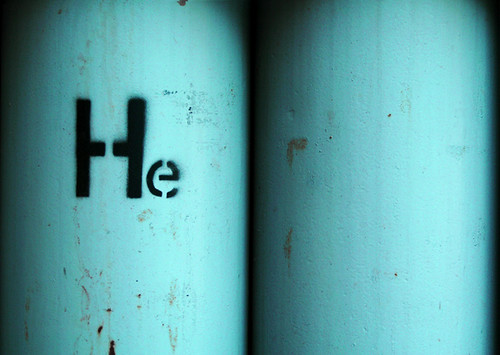Is the helium party over?

 My past entries about airships replacing cargo planes or carrying out surveillance missions have prompted similar reactions from readers. Many get excited, then others burst their hypothetical balloons with reminders of the Earth's finite supply of helium, the second lightest element on Earth following hydrogen.
My past entries about airships replacing cargo planes or carrying out surveillance missions have prompted similar reactions from readers. Many get excited, then others burst their hypothetical balloons with reminders of the Earth's finite supply of helium, the second lightest element on Earth following hydrogen.
The future of airships aside, helium serves many important purposes (rocketry, cryogenics, fiber optics, deep-sea diving, LCD production, squeaky voices), and it is running out.
The coming helium shortage has been known for a while, but according to Cornell's Robert Richardson, who won a Nobel Prize in 1996 for his work with helium-3, U.S. policy has been hastening the element's dissipation into the rest of the universe, up, up and away.
Richardson blames the Helium Privatization Act of 1996 for "squandering" the precious resource by making it too cheap. At bargain-basement prices, the U.S. has been selling off helium supplies, which some estimates say could be exhausted within 30 years or so.
And we can't make more. While nuclear fusion reactions within the sun produce helium, we Earthlings must source our helium via the slow radioactive decay of rock, obtaining most of it during natural gas extraction.
Steve Connor reports for The Independent:
A billion cubic metres – or about half of the world's reserves – are now stored in this cluster of mines, pipes and vats that extend underground for more than 200 miles from Amarillo to Kansas.
But in 1996, the US passed the Helium Privatisation Act which directed that this reserve should be sold by 2015 at a price that would substantially pay off the federal government's original investment in building up the reserve.
The law stipulated the amount of helium sold off each year should follow a straight line with the same amount being sold each year, irrespective of the global demand for it.
 Perhaps as a result of increased scrutiny and a National Academy of Sciences report (which Richardson collaborated on), last Friday the Bureau of Land Management raised the 2011 price of crude helium to $75 per thousand cubic feet from $64.75 in 2010.
Perhaps as a result of increased scrutiny and a National Academy of Sciences report (which Richardson collaborated on), last Friday the Bureau of Land Management raised the 2011 price of crude helium to $75 per thousand cubic feet from $64.75 in 2010.
But will this be incentive enough for users, such as NASA, to recycle the gas after use?
Richardson tells New Scientist what the U.S. government should do:
Get out of the business and let the free market prevail. The consequence will be a rise in prices. Unfortunately, party balloons will be $100 each rather than $3 but we'll have to live with that.
Related on SmartPlanent:
Images: Flickr/reynardkarman and Cornell University
Via: The Independent
This post was originally published on Smartplanet.com